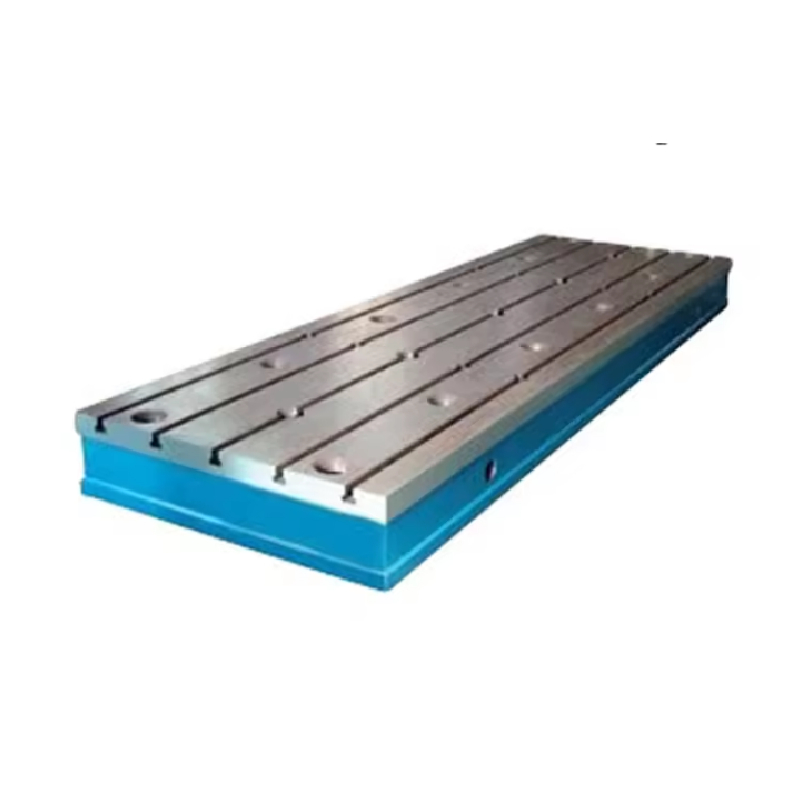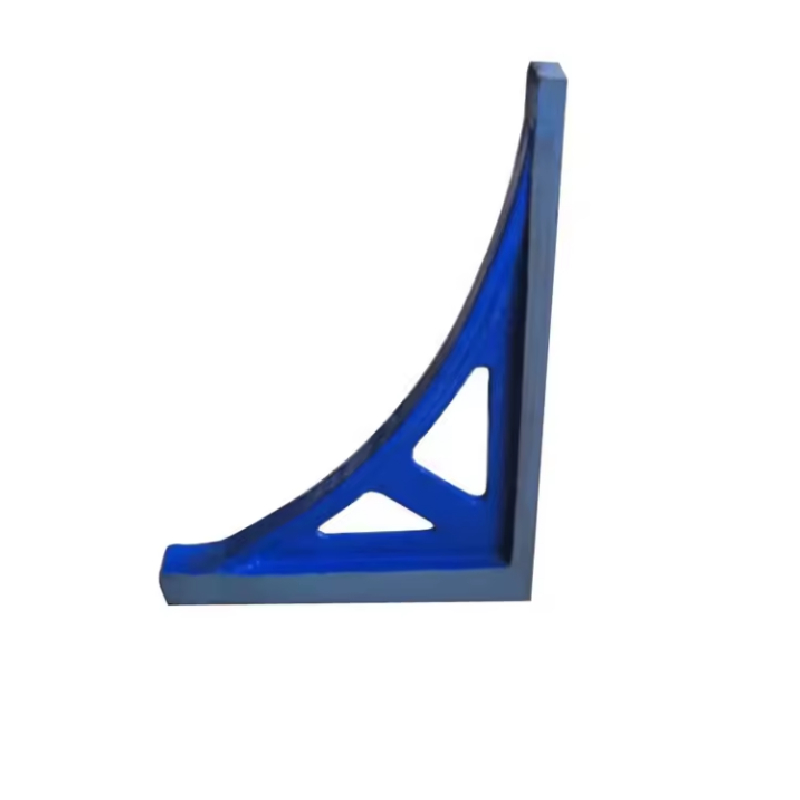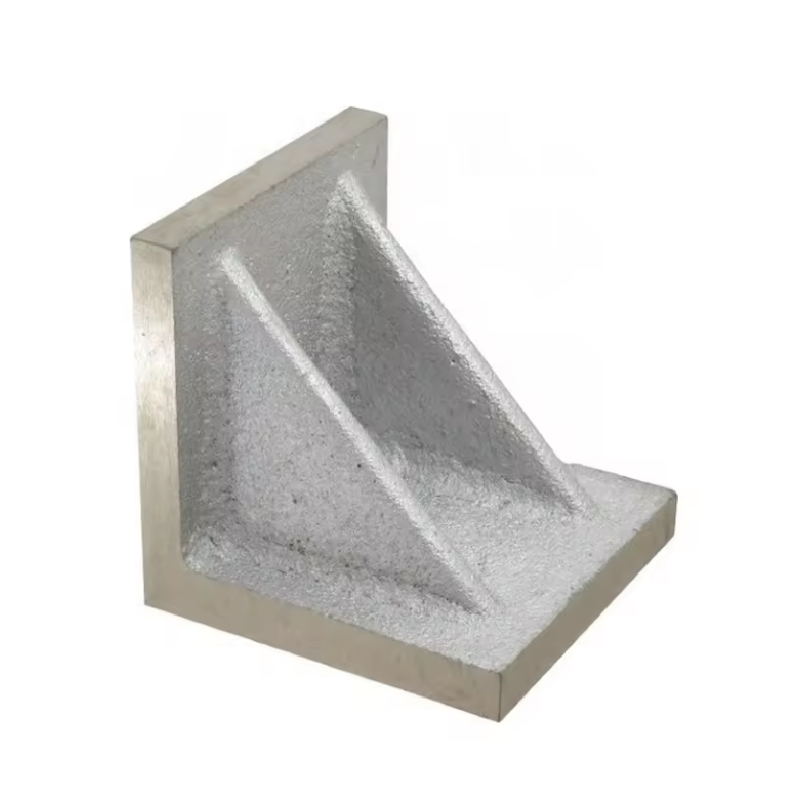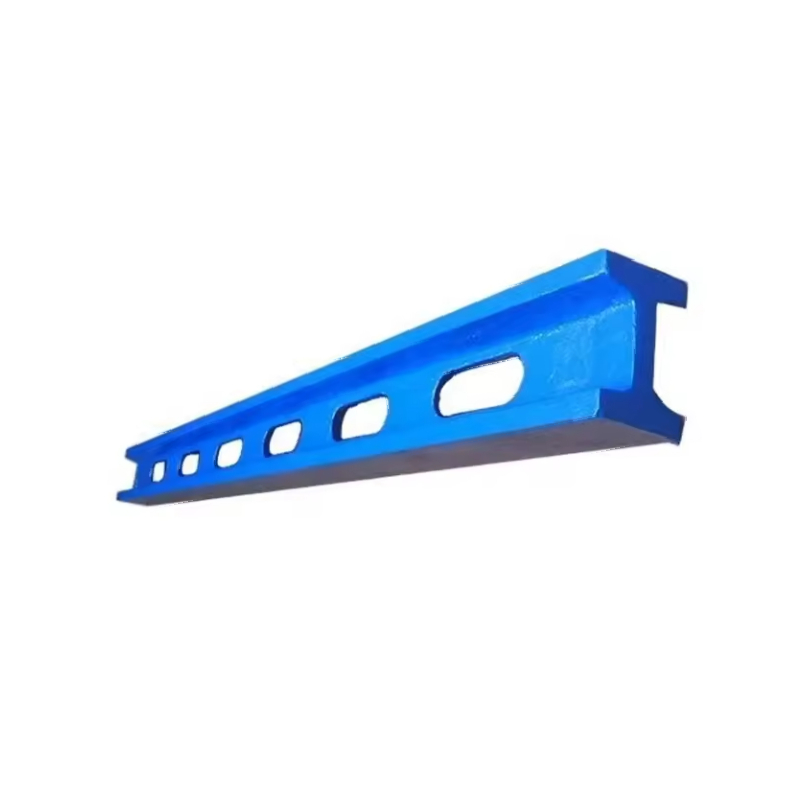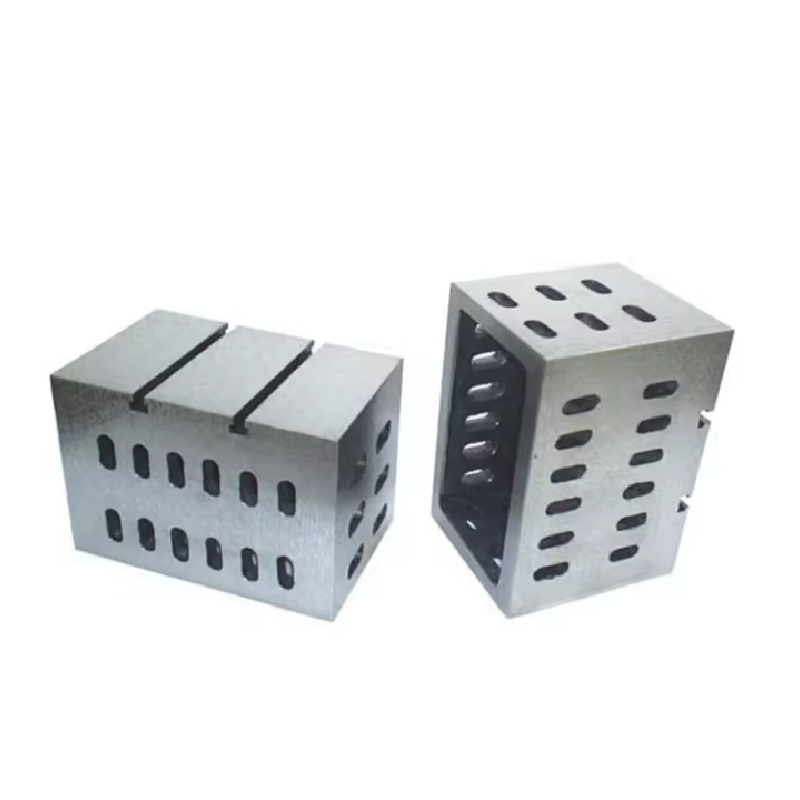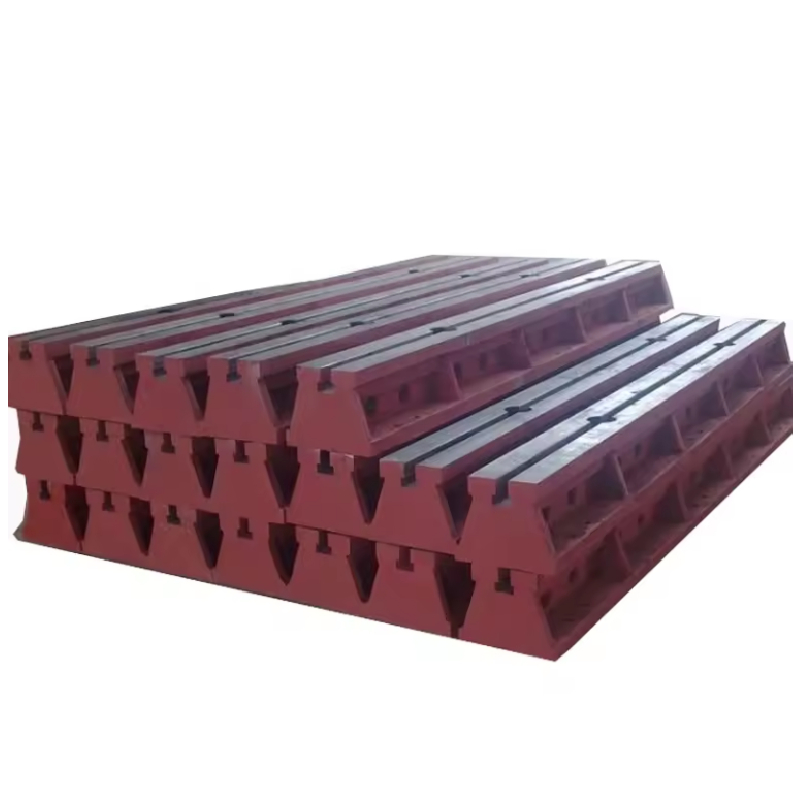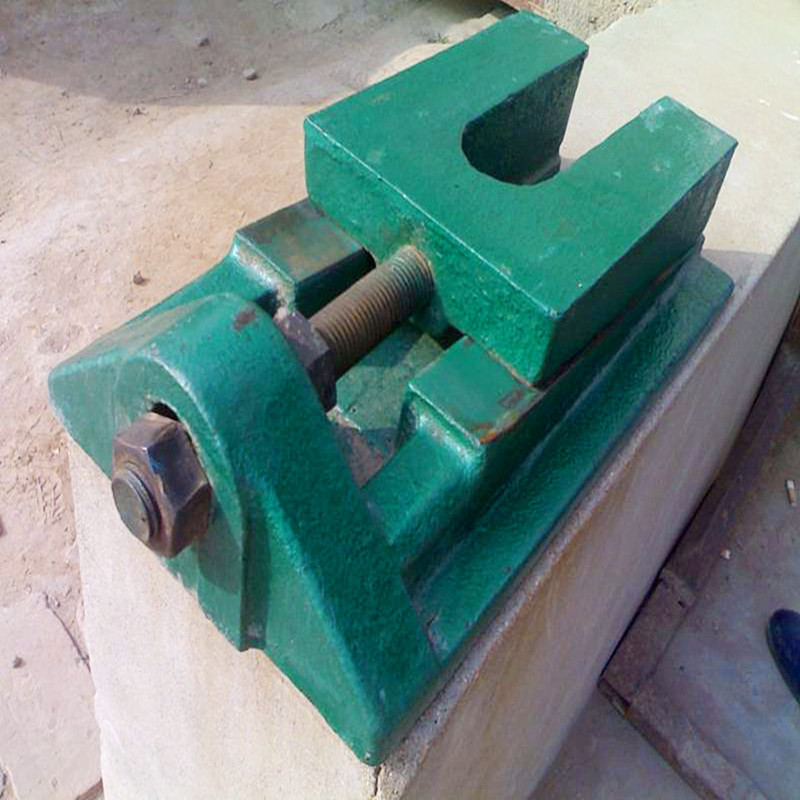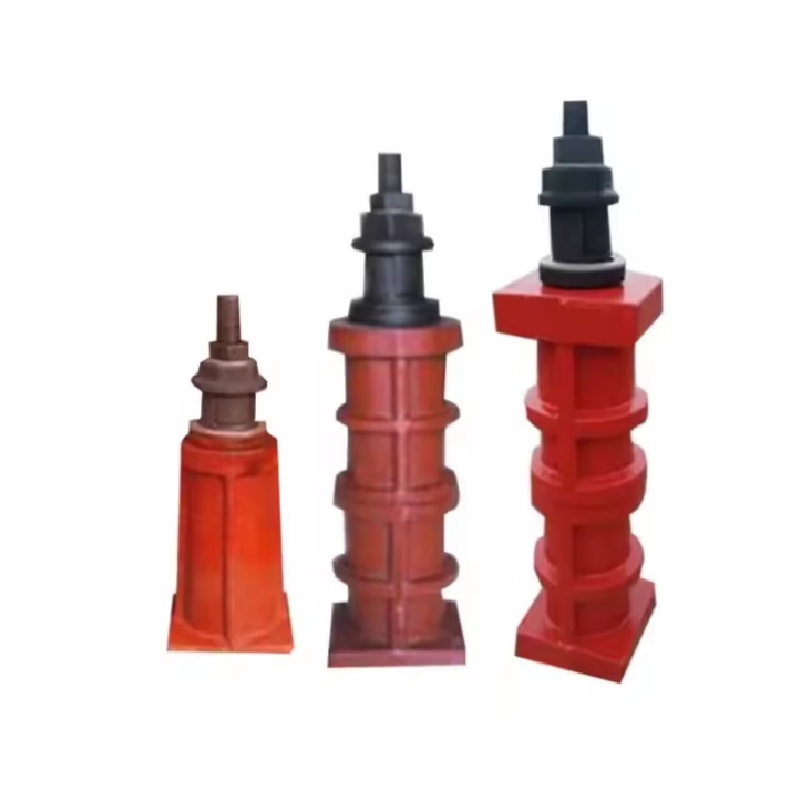Aug . 11, 2025 01:00 Back to list
Precision Leveling Mounts: Stable & Adjustable Solutions
The Foundational Role of Leveling Mounts in Modern Industrial Stability
In the intricate world of industrial machinery, precision and stability are not just desirable traits; they are fundamental prerequisites for operational efficiency, safety, and longevity. At the core of achieving this critical equilibrium lies the often-underestimated component: leveling mounts. These robust, adjustable devices are engineered to provide the stable, level foundation necessary for heavy machinery, sensitive equipment, and production lines, ensuring optimal performance and preventing premature wear. Far beyond simple support, they are crucial for mitigating vibration, compensating for uneven flooring, and facilitating precise machine alignment—factors that directly impact product quality, operational noise, and the overall lifespan of valuable assets. Without a perfectly level base, even the most advanced machinery can suffer from undue stress on components, leading to misalignments, increased friction, power inefficiencies, and ultimately, costly downtime. The application of sophisticated leveling mounts transforms a potentially unstable setup into a rigid, controlled environment, enhancing productivity and adherence to stringent quality control standards across diverse industrial sectors. Their ability to finely tune the horizontal plane of equipment, even under immense loads, underscores their indispensable value in today's highly automated and precision-driven manufacturing landscapes. This introduction sets the stage for a deep dive into how these essential components are designed, manufactured, applied, and optimized to meet the rigorous demands of modern industry, showcasing their profound impact on operational excellence and technological advancement.
The demand for highly precise and reliable leveling mounts continues to surge as industries move towards greater automation and stricter quality control protocols. Manufacturers are increasingly investing in state-of-the-art machinery that operates at higher speeds and tighter tolerances, making the stability provided by these mounts absolutely non-negotiable. Whether it's a multi-axis CNC machine, a high-speed packaging line, or a complex robotic assembly cell, maintaining perfect horizontal alignment is paramount. Furthermore, the global shift towards sustainable manufacturing practices places an emphasis on energy efficiency and reduced material waste, both of which are positively influenced by properly leveled equipment. Vibrations, for instance, not only degrade machine components over time but can also translate into wasted energy and diminished product quality. By effectively isolating these vibrations, leveling mounts contribute directly to a greener, more efficient industrial footprint. Their design has evolved significantly, incorporating advanced materials and engineering principles to withstand extreme conditions, from corrosive environments in chemical processing plants to high-temperature operations in metallurgical factories. This evolution reflects a growing understanding of their critical role in the broader ecosystem of industrial machinery, elevating them from mere accessories to indispensable engineering solutions that underpin the very foundation of modern manufacturing excellence. The comprehensive utility of various level types and their specific applications, from basic spirit levels for initial setup to highly accurate laser level ruler tools for micro-adjustments, highlights the meticulous attention to detail required in machinery installation, ensuring that the foundational stability provided by the mounts is perfectly optimized.
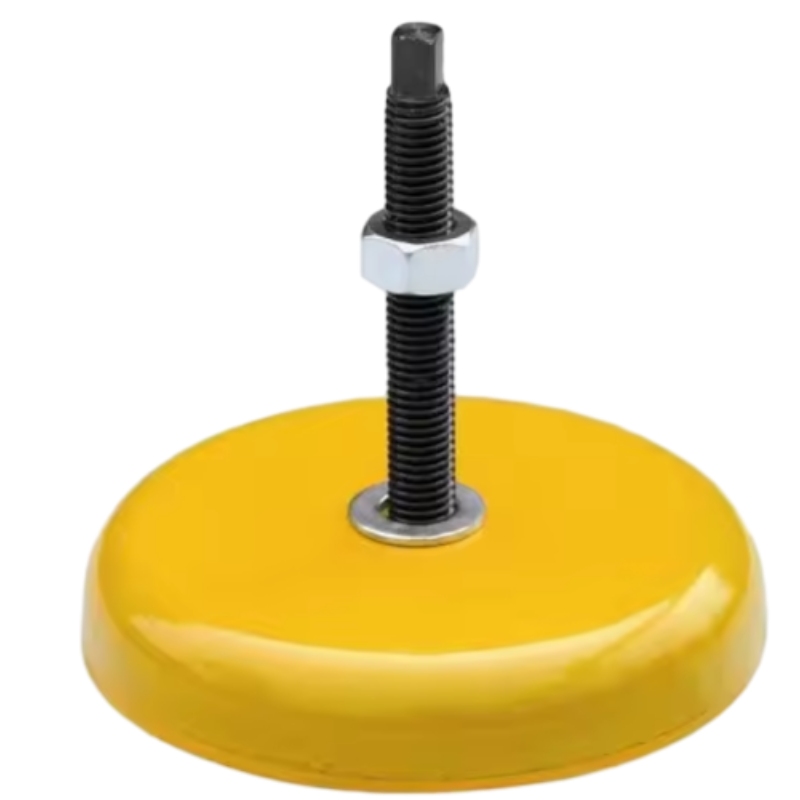
Current Trends and Market Dynamics Shaping the Leveling Mounts Industry
The global market for leveling mounts is experiencing dynamic growth, driven by several overarching industrial trends. Automation and robotics are at the forefront, necessitating ultra-stable platforms for their precise movements and operations. As factories adopt Industry 4.0 paradigms, the demand for sophisticated vibration isolation and leveling solutions escalates. Equipment in smart factories, often integrated with sensors and real-time data analytics, requires a consistent and stable base to ensure the accuracy of data collection and output. This includes advanced CNC machines, automated guided vehicles (AGVs), and collaborative robots (cobots). Furthermore, the increasing complexity and sensitivity of manufacturing processes, particularly in sectors like semiconductors, pharmaceuticals, and optics, demand vibration-free environments that only high-quality leveling mounts can provide. The drive towards miniaturization and higher precision in product manufacturing means even the slightest instability can lead to significant defects, making robust leveling solutions indispensable. This has propelled manufacturers to innovate, developing mounts with finer adjustment mechanisms, integrated monitoring capabilities, and enhanced damping properties. The market is also seeing a diversification in material science, with new polymers and composites being introduced alongside traditional steel and cast iron, offering improved performance in specific environments, such as those with high chemical exposure or extreme temperatures.
Another significant trend is the growing emphasis on environmental sustainability and workplace safety. Leveling mounts contribute to these objectives by reducing noise pollution through vibration damping and extending the operational life of machinery, thereby minimizing waste and the need for frequent replacements. The focus on energy efficiency also plays a role, as perfectly leveled machines operate with less friction and strain, consuming less power over their lifetime. Regulatory compliance, particularly concerning noise levels and machine stability in industrial settings, is also pushing the adoption of advanced leveling mounts. Geographically, emerging economies are experiencing rapid industrialization, particularly in Asia and Latin America, which translates into a burgeoning demand for industrial machinery and, consequently, for robust leveling solutions. The competitive landscape is characterized by innovation, with manufacturers investing heavily in R&D to develop custom solutions for niche applications, such as seismic protection mounts or those designed for cleanroom environments. The trend towards modular and flexible manufacturing setups also means that leveling mounts must be easily adaptable and reusable, facilitating quick reconfigurations of production lines. This evolving market demands a nuanced understanding of both macro-economic shifts and specific industrial requirements to provide solutions that are not only technically superior but also economically viable and environmentally responsible, ensuring that the foundational support for industrial growth is both stable and sustainable.
The increasing adoption of lean manufacturing principles across industries further fuels the demand for high-performance leveling mounts. In lean environments, every component and process is scrutinized for efficiency and value addition. Unstable machinery leads to unpredictable outputs, increased scrap rates, and inefficient material flow, all of which contradict lean principles. Therefore, investing in superior leveling mounts is seen as a strategic move to eliminate these inefficiencies at their root. Furthermore, the global supply chain disruptions witnessed in recent years have prompted many companies to re-evaluate their manufacturing footprints, often leading to onshoring or nearshoring initiatives. This relocation and expansion of manufacturing facilities directly translate to new installations of machinery, each requiring reliable leveling solutions. The market is also being influenced by the rising cost of industrial real estate, which necessitates maximizing the utility of available space. This often means installing heavier, more complex machinery in existing facilities, demanding leveling mounts capable of handling higher load capacities and providing superior vibration isolation to prevent structural damage to the building or interference with adjacent equipment. The convergence of these trends—automation, sustainability, lean manufacturing, and reconfigured supply chains—solidifies the critical role of leveling mounts as an indispensable component in the foundation of modern, efficient, and resilient industrial operations. This comprehensive market overview underscores why their design, material selection, and application are subjects of continuous innovation and strategic importance for both manufacturers and end-users.
Anatomy and Technical Parameters: Unpacking the Engineering Behind Leveling Mounts
Understanding the technical specifications and construction of leveling mounts is paramount for selecting the appropriate solution for specific industrial applications. At their core, these devices are designed to provide stable, adjustable support, but their efficacy hinges on a complex interplay of materials, design principles, and manufacturing precision. Typically, a leveling mount comprises several key components: a robust base, an adjustable stud or bolt, and often an anti-vibration pad or sole. The base, which bears the direct load of the machinery, is usually constructed from high-strength materials such as galvanized steel, stainless steel (for corrosion resistance), or cast iron, depending on the required load capacity and environmental conditions. The adjustable stud, which allows for precise height and angle modifications, typically features a fine thread for minute adjustments, ensuring that the machine can be brought to a perfectly level plane. This adjustment mechanism can be manual, using a wrench, or in more advanced systems, might involve hydraulic or pneumatic actuation for heavy loads. The anti-vibration pad, when present, is crucial for isolating machinery from floor vibrations and vice-versa, significantly reducing noise and prolonging the life of both the equipment and the surrounding infrastructure. These pads are often made from specialized elastomers like NBR, neoprene, or polyurethane, selected for their specific damping characteristics and chemical resistance.
Key technical parameters dictate the performance and suitability of leveling mounts for various applications. The most critical parameter is Load Capacity, which defines the maximum weight a single mount can safely support. This is a primary determinant in selecting the correct mount type, often calculated with a safety factor to accommodate dynamic loads and potential overloads. Another vital parameter is the Adjustability Range, indicating the minimum and maximum height settings, which is essential for accommodating uneven floors and precise machine alignment. Vibration Damping Coefficient quantifies the mount’s ability to absorb and dissipate vibrational energy, measured in terms of percentage reduction in vibration amplitude or frequency response. This is particularly crucial for sensitive equipment where vibrations can compromise product quality or data accuracy. The Footprint Diameter of the base influences stability and load distribution over the floor. Thread Size (e.g., M10, M16, 5/8"-11 UNC) and Thread Length are critical for compatibility with machine frames and for achieving the necessary adjustment range. Material grade, such as AISI 304 or 316 stainless steel, specifies corrosion resistance and strength, paramount in harsh or sterile environments. Operating temperature range and resistance to chemicals, oils, or solvents are also critical environmental specifications. When discussing level types in this context, it refers to the different designs and configurations of leveling feet, such as articulated, fixed, or heavy-duty shock-absorbing variants, each optimized for specific challenges. The precision required for installation often relies on using a digital level ruler or laser level to ensure the foundational accuracy of the setup.
Common Leveling Mounts Parameters
| Parameter | Description | Typical Range/Value | Importance |
|---|---|---|---|
| Load Capacity (per mount) | Maximum static load a single mount can support. | 500 kg to 20,000+ kg | Critical for safety and structural integrity. |
| Adjustability Range | Vertical adjustment height from minimum to maximum. | 20 mm to 150 mm+ | Facilitates precise leveling on uneven surfaces. |
| Vibration Damping (%) | Percentage reduction in transmitted vibration. | 50% to 99% (depending on pad material) | Protects sensitive equipment, reduces noise. |
| Base Diameter (Footprint) | Diameter of the mount's base for stability. | 50 mm to 250 mm+ | Influences stability and load distribution. |
| Thread Size | Diameter and pitch of the adjustment screw. | M8, M10, M12, M16, M20, M24, UNC sizes | Ensures compatibility with machine frame. |
| Material (Base/Stud) | Primary construction material for durability. | Galvanized Steel, Stainless Steel (304, 316), Cast Iron, Polyamide | Impacts strength, corrosion resistance, cost. |
| Pad Material | Material of the anti-vibration pad. | NBR, Neoprene, Polyurethane, Felt | Determines vibration damping and chemical resistance. |
| Operating Temperature | Range of ambient temperatures the mount can withstand. | -30°C to +120°C (Material Dependent) | Ensures performance in specific industrial environments. |
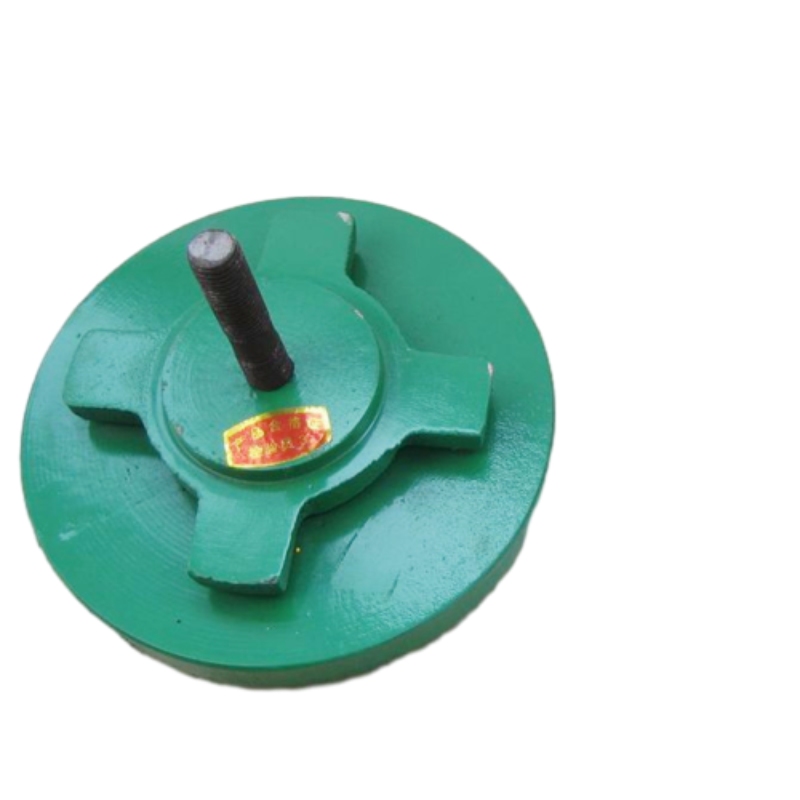
Manufacturing Excellence: The Journey from Raw Material to Precision Leveling Mount
The production of high-quality leveling mounts is a sophisticated process that demands stringent adherence to material specifications, precision engineering, and rigorous quality control. It begins with the careful selection of raw materials, which is pivotal to the mount's ultimate performance and longevity. For heavy-duty applications, high-grade carbon steel or alloy steel is often chosen for its superior strength and durability, while for corrosive or hygienic environments, various grades of stainless steel, such as AISI 304 or AISI 316, are preferred due to their excellent corrosion resistance and cleanability, often certified to ISO 9001 standards for material traceability. For lightweight or chemically resistant applications, robust polymers like polyamide or fiberglass-reinforced plastics are utilized. Once selected, these materials undergo initial processing. For metal components, this often involves casting or forging processes. Casting, particularly investment casting, is used for complex base geometries, providing excellent dimensional accuracy and surface finish. Forging, on the other hand, is employed to create components like studs and bolts, enhancing their grain structure and mechanical properties, resulting in superior strength and fatigue resistance. These initial processes are critical in shaping the raw material into a near-net shape, reducing subsequent machining time and material waste.
Following the primary shaping, the components proceed to CNC (Computer Numerical Control) machining. This stage is where the precision of leveling mounts truly comes to life. Multi-axis CNC lathes and milling machines are used to create precise threads on the studs, machine the base to exact dimensions, and ensure flatness and perpendicularity, all critical for accurate leveling. Tolerances are often in the micrometre range, ensuring smooth adjustment and stable load bearing. Post-machining, various surface treatment processes are applied to enhance durability, corrosion resistance, and aesthetic appeal. This can include galvanization for carbon steel mounts to provide a protective zinc coating against rust, passivation for stainless steel to further enhance its corrosion resistance, or electropolishing for cleanroom and food processing applications to achieve an ultra-smooth, easy-to-clean surface. For polymer-based mounts, specific molding techniques and post-curing processes ensure structural integrity and dimensional stability. Each step in this manufacturing chain is subject to rigorous in-process quality checks.
The final stages involve assembly and comprehensive testing. Components like anti-vibration pads (made from high-performance elastomers like NBR or Neoprene), locking nuts, and articulating joints are assembled with care. The finished leveling mounts then undergo a battery of stringent tests to ensure they meet specified performance parameters and industry standards like ISO (e.g., ISO 14001 for environmental management, ISO 45001 for occupational health and safety in manufacturing) and ANSI (American National Standards Institute). These tests include load deflection tests to verify load capacity and stability under pressure, vibration isolation tests to measure damping efficiency, salt spray tests for corrosion resistance, and lifecycle testing to predict the mount's service life under various conditions. A well-manufactured leveling mount can have a service life spanning decades, depending on the operational environment and load cycles. In critical industries like petrochemical and metallurgy, where equipment is exposed to extreme temperatures, corrosive chemicals, and heavy loads, the emphasis on robust materials and precise manufacturing is even higher. For instance, leveling mounts used in petrochemical refining facilities must resist sulfuric acid and high heat, making specialized stainless steel or exotic alloys essential. In metallurgy, with its intense vibrations and dust, mounts need exceptional load-bearing capacity and robust sealing to protect internal mechanisms. These rigorous manufacturing and testing protocols ensure that each leveling mount from a reputable manufacturer can reliably perform its critical function, contributing to enhanced energy saving through reduced friction and wear, and superior anti-corrosion properties for long-term operational integrity across diverse and demanding industrial applications.
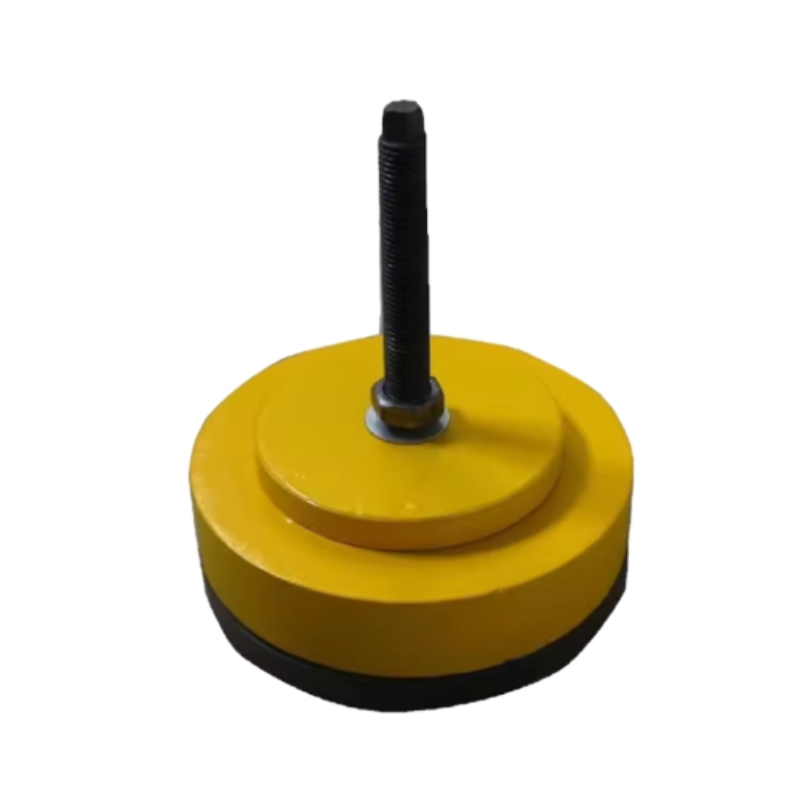
Unlocking Potential: Diverse Application Scenarios for Leveling Mounts
The versatility of leveling mounts makes them indispensable across a vast array of industrial and commercial applications, each benefiting from their ability to provide stability, attenuate vibrations, and compensate for uneven surfaces. In the machine tool industry, for example, CNC machining centers, lathes, and milling machines demand absolute precision. Even minute misalignments can lead to inaccuracies in parts, increased tool wear, and compromised surface finishes. Here, leveling mounts ensure that the machine's bed is perfectly horizontal, allowing for consistent cuts and reliable repeatable results. In printing and packaging, high-speed presses and automated packaging lines generate significant vibrations. These vibrations can degrade print quality, disrupt precise filling mechanisms, and accelerate wear on rollers and conveyor systems. Anti-vibration leveling mounts effectively absorb these oscillations, maintaining operational stability and extending equipment lifespan. The food and beverage industry presents unique challenges due to strict hygiene regulations and the need for frequent washdowns. Stainless steel leveling mounts with hygienic designs, often FDA-compliant, are crucial here, resisting corrosion and bacterial growth while supporting heavy processing equipment like mixers, conveyors, and bottling machines. Their ability to remain stable in wet, high-pressure cleaning environments is paramount.
The petrochemical industry operates in extremely harsh environments, often involving corrosive chemicals, high temperatures, and flammable substances. Leveling mounts used in refining equipment, pumps, and compressors must exhibit exceptional material strength and corrosion resistance, typically made from specialized alloys or heavily galvanized steel. Their stability is critical to prevent leaks and ensure the safe operation of high-pressure systems. In metallurgy, where heavy machinery like rolling mills, furnaces, and casting equipment are commonplace, leveling mounts bear immense static and dynamic loads. They mitigate the powerful vibrations generated by these operations, protecting the structural integrity of the facility and ensuring the accurate production of metal products. The water treatment and drainage industries face constant exposure to water, wastewater, and various chemicals. Pumps, filtration systems, and large tanks rely on corrosion-resistant leveling mounts to provide a stable foundation, prevent subsidence, and ensure long-term operational reliability in damp, often underground, conditions.
Beyond these heavy industries, leveling mounts are also vital in sectors requiring cleanroom conditions, such as pharmaceutical manufacturing and semiconductor production. In these environments, even microscopic vibrations can disrupt sensitive processes like wafer fabrication or drug formulation. Specialized cleanroom-compatible leveling mounts provide the necessary ultra-stable, vibration-free platform, often featuring non-shedding materials and sealed designs. Furthermore, the burgeoning field of renewable energy, particularly in the manufacturing of solar panels and wind turbine components, relies on precision machinery mounted on leveling mounts to ensure the quality and consistency of these critical energy technologies. The overall advantages across all these scenarios are significant: enhanced energy saving through reduced friction and wear on mechanical components, superior anti-corrosion properties for longevity in challenging environments, and significantly improved operational safety by stabilizing heavy machinery. The ability to achieve precise level through fine adjustments allows for optimal machine performance and reduces maintenance costs significantly. The market for level wholesale solutions also benefits from these diverse applications, as bulk purchases become common for large-scale industrial installations or equipment manufacturers producing multiple units of machinery that require reliable, standardized leveling solutions, further underscoring the widespread and critical utility of these components.
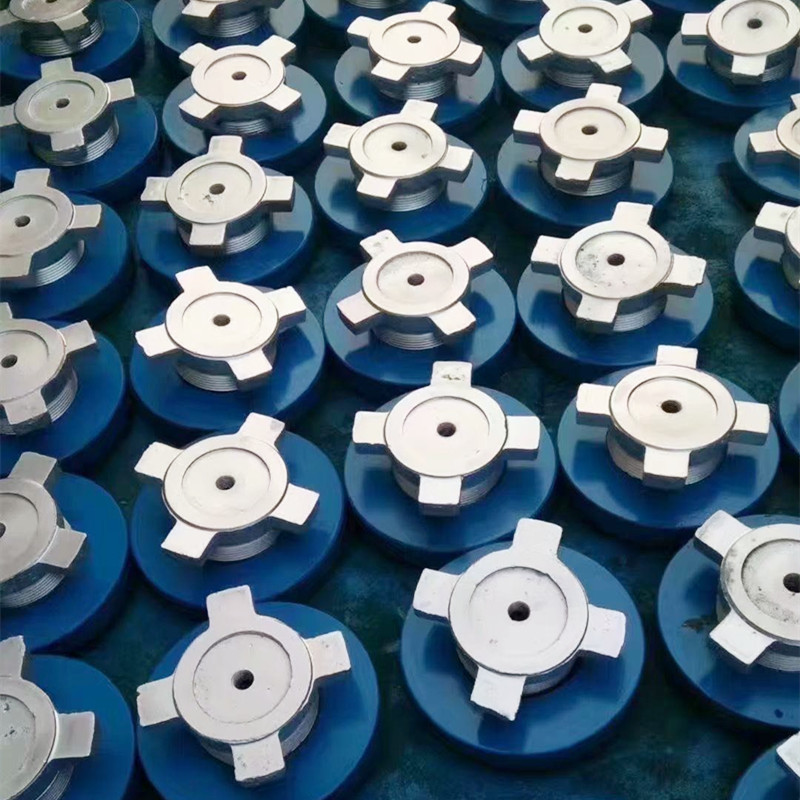
Technical Advantages and Performance Superiority of Advanced Leveling Mounts
The inherent technical advantages of well-engineered leveling mounts extend far beyond simple load support, contributing significantly to the overall efficiency, longevity, and safety of industrial operations. Foremost among these is Precision Alignment. Modern leveling mounts allow for incredibly fine adjustments, typically achieved via high-pitch threaded rods or hydraulic mechanisms. This precision is critical for multi-axis machinery where even a slight misalignment can lead to cumulative errors in product output, increased friction, and premature wear on bearings and other moving parts. Accurate leveling ensures that all components operate within their designed tolerances, optimizing their performance. Secondly, Superior Vibration Attenuation is a hallmark of high-performance mounts. Equipped with specialized anti-vibration pads made from elastomers like nitrile rubber (NBR), neoprene, or proprietary vibration-absorbing compounds, these mounts effectively isolate machinery from floor-borne vibrations and simultaneously prevent machine-generated vibrations from transmitting into the building structure. This not only protects sensitive equipment and improves product quality but also reduces noise pollution in the workplace, contributing to a more comfortable and safer environment. Vibration reduction directly impacts the lifespan of equipment by reducing fatigue stress on components, translating into lower maintenance costs and less frequent replacements.
Another critical advantage is Optimal Load Distribution and Stability. Leveling mounts are designed to distribute the static and dynamic loads of heavy machinery evenly across their footprint and onto the underlying floor. This prevents localized stress points that could damage the machine frame or the facility's foundation. The stability provided by a properly installed set of leveling mounts ensures that machinery remains firmly in place, even during high-speed operations or unexpected impacts, thereby enhancing operational safety and preventing accidents. Furthermore, advanced leveling mounts offer exceptional Corrosion Resistance and Suitability for Harsh Environments. Manufacturers utilize materials like AISI 316 stainless steel, which provides superior resistance to acids, alkalis, and chlorides, making them ideal for chemical processing, marine applications, and food processing environments where hygiene and resistance to cleaning agents are paramount. Specialized coatings like nickel plating or powder coating can further enhance this protection for carbon steel variants.
The long-term benefits include Enhanced Machine Lifespan and Reduced Maintenance. By providing a stable, vibration-free foundation, leveling mounts minimize wear and tear on bearings, gears, and other critical machine components, significantly extending the operational life of the equipment. This reduction in frictional forces also translates into Energy Saving, as less power is wasted on overcoming misalignments and vibrations. Machines running smoothly and level consume less energy, leading to lower operating costs and a reduced carbon footprint. Finally, Improved Operational Safety is a direct outcome of machine stability. Unstable machinery can pose significant risks to operators and surrounding personnel. By ensuring a secure and immovable base, leveling mounts mitigate these hazards, contributing to a safer working environment. Their ability to finely adjust equipment position, often facilitated by a high-precision level ruler, ensures optimal setup. The comprehensive benefits—from precision and vibration control to corrosion resistance and safety—underscore why investing in high-quality leveling mounts is a strategic decision for any industrial enterprise seeking to maximize efficiency, protect assets, and ensure long-term operational integrity. These technical advantages are what set superior leveling mounts apart and make them indispensable in today's demanding industrial landscape.
Choosing Your Partner: Manufacturer Comparison and Tailored Leveling Solutions
Selecting the right manufacturer for leveling mounts is as crucial as selecting the mounts themselves, as it directly impacts product quality, technical support, and the potential for customized solutions. While many suppliers offer standard leveling mounts, discerning industrial buyers look for manufacturers who demonstrate a deep understanding of application-specific challenges, possess robust engineering capabilities, and maintain stringent quality control processes. Key factors to consider during manufacturer comparison include: Product Range and Specialization (do they offer a wide variety of level types, materials, and load capacities?), Quality Certifications (e.g., ISO 9001, industry-specific approvals like FDA for food-grade mounts), Technical Expertise and Support (can they provide detailed specifications, CAD models, and application engineering assistance?), and Customization Capabilities. While off-the-shelf solutions often suffice, many industrial applications require tailored leveling mounts that can accommodate unique load distributions, specific environmental exposures, or integration with existing machinery designs. This is where a manufacturer's ability to offer custom solutions becomes a significant differentiator.
STR Machinery stands out in this competitive landscape by combining extensive experience, innovative engineering, and a strong commitment to customer-centric solutions. With a long history of serving diverse industries, STR Machinery has honed its expertise in designing and manufacturing leveling mounts that meet the highest standards of performance and reliability. Our engineering team excels at understanding the nuances of unique industrial requirements, whether it involves developing mounts capable of supporting exceptionally heavy loads, designing hygienic mounts for sterile environments, or creating specialized vibration isolation systems for ultra-sensitive equipment. This includes a profound understanding of various level types and their optimal applications. Our approach to customization begins with a thorough consultation, where we assess the client's specific needs, including load parameters, environmental conditions (temperature, moisture, chemical exposure), desired adjustability, and integration challenges. We leverage advanced simulation tools and material science knowledge to recommend the optimal design, material (e.g., specific stainless steel alloys, high-performance polymers, or specialized elastomers for anti-vibration pads), and surface treatment. This collaborative design process ensures that the resulting leveling mounts are perfectly matched to the application, often exceeding conventional performance expectations.
For instance, a client in the offshore oil and gas sector might require leveling mounts that can withstand extreme saltwater corrosion and dynamic forces from wave motion; STR Machinery can provide solutions utilizing duplex stainless steel and robust locking mechanisms. Conversely, a pharmaceutical client might need mounts with electropolished surfaces and FDA-compliant elastomers for stringent cleanroom applications, a challenge met with our specialized hygienic designs. Our manufacturing facilities are equipped with state-of-the-art CNC machining centers and quality assurance laboratories, ensuring that every custom-engineered leveling mount meets precise specifications and rigorous international standards like ISO and ANSI. We also understand the economic considerations for large-scale projects, offering competitive pricing for level wholesale orders while maintaining uncompromising quality. This dedication to precision, adaptability, and unwavering support post-delivery firmly establishes STR Machinery as a trusted partner for industries seeking optimal stability and long-term reliability from their industrial equipment foundations. Our ability to tailor solutions, combined with a comprehensive understanding of diverse applications, differentiates us from competitors who may only offer standard product lines, ensuring that every client receives a solution truly optimized for their unique operational demands.
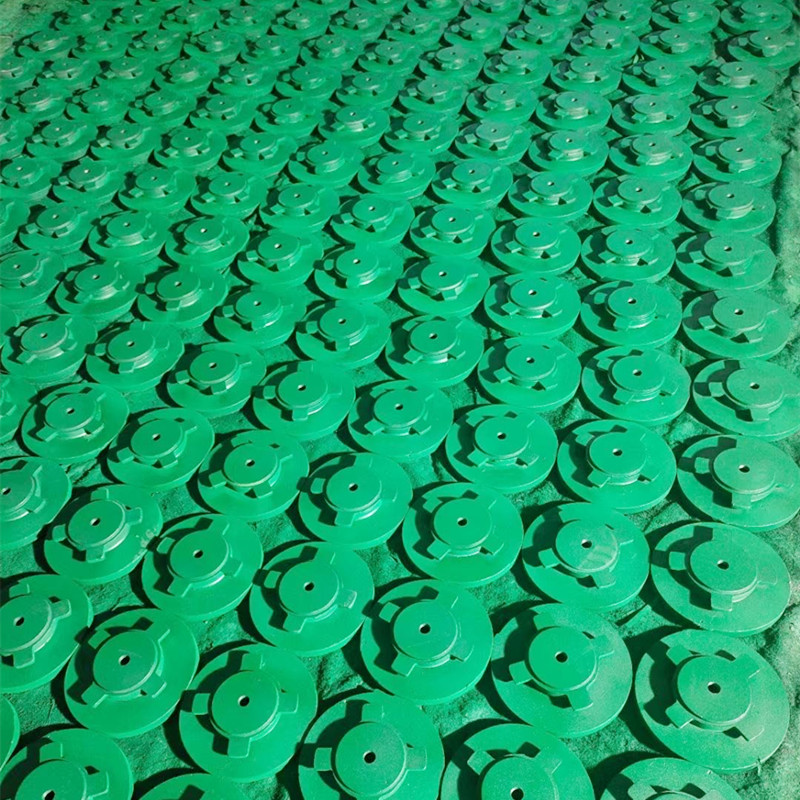
Real-World Impact: Application Cases and Success Stories of Leveling Mounts
The theoretical advantages of leveling mounts translate into tangible benefits in real-world industrial environments, as demonstrated by numerous successful applications. One notable case involves a large metallurgical plant in the Ruhr Valley, Germany, facing persistent challenges with its heavy rolling mill. The immense forces and vibrations generated by the mill caused constant structural stress on the building, frequent misalignments in the machinery, and premature wear on critical components, leading to significant downtime and maintenance costs. After a thorough assessment, the plant opted to replace their conventional rigid supports with custom-engineered, heavy-duty leveling mounts incorporating advanced vibration damping pads. These mounts, capable of supporting loads up to 15,000 kg each, were manufactured from specialized high-tensile steel and featured oversized anti-vibration pads made from a proprietary polymer blend designed for high dynamic loads. The installation resulted in a dramatic reduction in transmitted vibrations, measured at a 75% decrease in amplitude, significantly prolonging the lifespan of the rolling mill's bearings and gears. This not only reduced maintenance intervals by 30% but also improved the consistency of the rolled metal sheets, leading to a 5% reduction in scrap material and substantial energy saving due to optimized machine operation.
Another compelling example comes from a pharmaceutical manufacturing facility in the Northeast USA, where highly sensitive precision equipment, including tablet presses and vial filling machines, was operating in a cleanroom environment. Even minor floor vibrations from adjacent heavy machinery were impacting the accuracy of dosage and filling, resulting in product quality issues and FDA compliance concerns. The solution involved implementing specialized stainless steel leveling mounts with integrated high-performance vibration isolators. These mounts were designed with hygienic features, including electropolished surfaces and FDA-compliant elastomer pads, ensuring no particle shedding or contamination risk, which is critical in cleanroom settings. The fine adjustment capability of these leveling mounts allowed for precise leveling to within 0.05 degrees, a crucial factor for the sensitive equipment. Post-installation, the facility reported a 90% reduction in vibration transmission to the sensitive equipment, leading to a noticeable improvement in product consistency and a complete elimination of vibration-related quality deviations. This case underscores the importance of tailored leveling mounts for maintaining stringent quality and regulatory standards in highly controlled environments.
A third significant application involves a large-scale water treatment plant in Southeast Asia. The plant's pumping stations and filtration units were suffering from premature corrosion and instability due to constant exposure to moisture, chemicals, and the aggressive nature of wastewater. Traditional mounts were corroding rapidly, leading to costly replacements and potential environmental hazards from leaks. STR Machinery provided robust leveling mounts constructed from AISI 316L stainless steel, known for its superior anti-corrosion properties in chloride-rich environments, along with sealed bases to prevent ingress of contaminants. These mounts were designed for heavy loads and featured encapsulated adjustment mechanisms to protect them from the harsh external conditions. The client reported a remarkable increase in the service life of the mounts, extending from an average of 3 years to over 10 years, drastically reducing maintenance costs and ensuring consistent, uninterrupted operation of vital water infrastructure. These examples vividly illustrate how meticulously designed and expertly manufactured leveling mounts provide not just foundational support, but comprehensive solutions that enhance operational efficiency, ensure product quality, extend equipment lifespan, and ultimately drive significant cost savings and improved safety across diverse and demanding industrial sectors. The feedback from these customers consistently highlights the transformative impact of investing in high-quality, application-specific leveling solutions.
Ensuring Trust: Principles, Customer Support, and Warranty Commitments
In the B2B landscape, the selection of a supplier for critical components like leveling mounts goes beyond mere product specifications; it hinges significantly on the supplier's adherence to the Google principles: Expertise, Experience, Authoritativeness, and Trustworthiness. A truly reliable partner like STR Machinery embodies these pillars. Our Expertise is rooted in decades of specialized knowledge in industrial machinery support and vibration isolation. Our engineering team comprises seasoned professionals with deep understanding of material science, mechanical engineering, and specific industry applications. This expertise allows us to not only manufacture standard products but also to innovate and custom-engineer solutions for the most challenging scenarios, ensuring optimal level and stability. Our Experience spans a wide array of industries, from heavy manufacturing and petrochemical to precision cleanroom environments. We've tackled diverse challenges, accumulating invaluable insights into various load requirements, environmental stressors, and operational dynamics. This hands-on experience translates into practical, reliable, and durable leveling mounts that have consistently performed in real-world settings across the globe. Customer feedback and long-standing partnerships serve as tangible evidence of this robust experience, highlighting our consistent ability to deliver effective solutions.
Our Authoritativeness is substantiated by adherence to rigorous international standards and comprehensive quality assurance protocols. STR Machinery products are manufactured under strict ISO 9001:2015 certified quality management systems, ensuring consistent product quality, traceability, and continuous improvement. We regularly conduct internal and external audits, including independent third-party testing for load capacities, vibration damping efficiency, and corrosion resistance, providing objective data that validates our product performance. Our material certifications, often compliant with ANSI standards, further reinforce our commitment to quality and material integrity. We also maintain a robust portfolio of industry partnerships and certifications relevant to specific sectors, such as adherence to certain hygienic design principles for food and pharmaceutical applications, which underscores our deep integration and recognition within key industrial verticals. This commitment to documented quality, verifiable data, and industry recognition establishes our position as an authoritative voice and reliable manufacturer in the field of leveling mounts.
Finally, Trustworthiness is built through transparent operations, clear commitments, and unwavering customer support.
Frequently Asked Questions (FAQ)
- Q: How do I select the correct load capacity for my leveling mounts?
A: To determine the required load capacity, divide the total weight of your machine by the number of leveling mounts you intend to use, and then apply a safety factor (typically 1.5 to 2.0) to account for dynamic loads and potential overloads. Our technical team can assist with precise calculations. - Q: What is the typical delivery cycle for custom leveling mounts?
A: Standard leveling mounts typically ship within 3-5 business days. For custom-engineered solutions, the delivery cycle depends on design complexity and material availability, generally ranging from 2-4 weeks after design approval. Expedited options are available upon request. - Q: What warranty does STR Machinery offer on its products?
A: STR Machinery provides a comprehensive 2-year warranty on all our leveling mounts against manufacturing defects and material failures under normal operating conditions. This commitment reflects our confidence in the durability and quality of our products. - Q: Can your leveling mounts be used in corrosive environments?
A: Yes, we offer specific lines of leveling mounts manufactured from high-grade stainless steel (e.g., AISI 316) or with specialized anti-corrosion coatings to withstand harsh chemical exposures and high humidity, ensuring long-term performance in challenging industrial settings.
Conclusion: The Future of Precision and Stability in Industrial Operations
As we have explored, leveling mounts are far more than mere utilitarian components; they are foundational elements that underpin the precision, efficiency, and longevity of modern industrial machinery. Their evolution from simple leveling feet to sophisticated engineering solutions, capable of dampening complex vibrations and withstanding extreme environmental conditions, mirrors the advancements in manufacturing itself. In an era where Industry 4.0 principles, automation, and intelligent manufacturing are redefining production floors, the demand for exceptionally stable and adaptable equipment bases will only intensify. The future of leveling mounts will likely see further integration of smart technologies, such as embedded sensors for real-time vibration monitoring and remote adjustment capabilities, allowing for proactive maintenance and even finer environmental control. Innovations in materials, particularly high-performance composites and advanced elastomers, will continue to push the boundaries of load capacity, vibration isolation, and chemical resistance, enabling these mounts to perform in increasingly demanding and specialized applications.
The drive towards sustainable industrial practices will also shape the development of leveling mounts, with a greater emphasis on recyclable materials, energy-efficient manufacturing processes, and designs that contribute to the overall energy savings of the machinery they support. The concept of a circular economy will encourage manufacturers to design mounts that are easier to refurbish or recycle at the end of their exceptionally long service life. For any industrial enterprise looking to optimize its operational performance, reduce long-term maintenance costs, and ensure the safety and precision of its valuable assets, investing in high-quality, expertly engineered leveling mounts is not merely an expense, but a strategic imperative. Choosing a partner like STR Machinery, with a proven track record of expertise, experience, authoritativeness, and unwavering trustworthiness, ensures that this critical investment yields maximum returns, securing the stable foundation upon which future industrial success is built.
As articulated in a recent discussion on the "Global Industrial Equipment Forum," a consensus emerged that "the unseen heroes of factory floors, such as advanced leveling mounts, are disproportionately responsible for operational uptime and precision outcomes, often overlooked until a problem arises. Their continuous refinement is pivotal for the next generation of smart manufacturing systems." Similarly, a prominent engineering journal noted, "the material science breakthroughs in vibration isolation, particularly within adjustable machine feet, represent a quiet revolution, allowing for previously unattainable levels of accuracy in high-speed machinery. This evolution ensures that even the most dynamic processes can maintain static-like stability." These sentiments underscore the profound and ongoing importance of these specialized components in the foundational architecture of modern industry.
-
Why Metric Trapezoidal Thread is Ideal for Precision Motion ControlNewsAug.05,2025
-
The Unique Properties of a Block of Granite for Industrial UseNewsAug.05,2025
-
The Role of Flanged Y Strainers in Preventing Pipeline ClogsNewsAug.05,2025
-
The Importance of Regular Calibration for Master Ring GagesNewsAug.05,2025
-
How a Cast Iron Surface Table Enhances Accuracy in ManufacturingNewsAug.05,2025
-
Comparing Different Check Valve Types for Optimal Flow ControlNewsAug.05,2025
Related PRODUCTS
